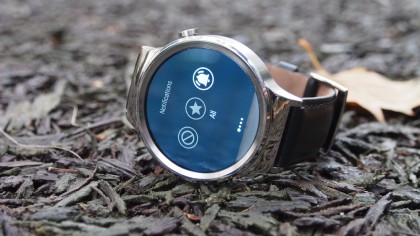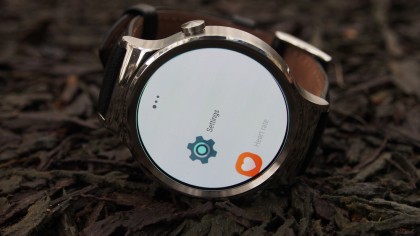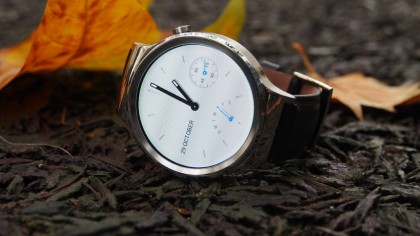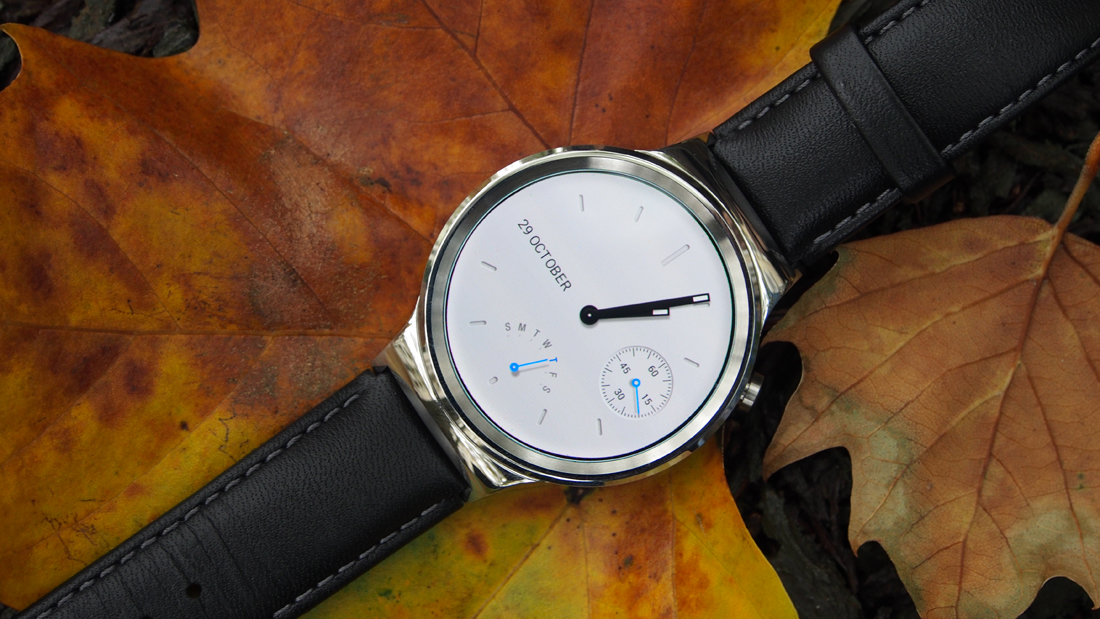Why you can trust TechRadar
Interface
- Has been updated to Android Wear 2.0
- Interface is much the same as other Android Wear watches
We weren't sure about Android Wear when it first released, it was clunky, and didn't really do much. But thanks to frequent updates from Google, the OS is really coming into its own.
The on-screen experience compared to every other Android Wear watch is almost identical. That's because Google doesn't let hardware manufacturers apply their own UI skins. In some ways that's good news, because it creates a seamless experience between all Android Wear devices. It does however make the smartwatches samey, and difficult to differentiate between them.
The Huawei Watch ran the most recent version of Android Wear, 5.1.1 when it launched, and now packs Android Wear 2.0.
The update brought with it some important features such as iPhone compatibility, Wi-Fi, watch-to-watch messaging, and gesture support.
Android Wear 2.0 also includes tweaks to the interface, standalone apps, and widgets known as 'complications.'
The UI is your basic Google Now-esque information cards affair, which pop up vertically from the bottom of the screen. You can scroll through cards with either your finger or a flick of your wrist (in case you don't have a spare hand).

You can swipe from the left to view more information about the card, or in the opposite direction to dismiss the card.
Sign up for breaking news, reviews, opinion, top tech deals, and more.
Swiping from the left on the homescreen will reveal your list of applications, with the three most recent apps displayed at the top. Swipe from the left again reveals your contacts page. Tap on a contact and you'll have the option to call, sent an email, or send a text.
Swiping down from the homescreen will bring you to some quick settings.
The Android Wear interface certainly isn't perfect, there can be a bit too much swiping and flicking involved, but if you find the Apple Watch interface too fiddly, it's an improvement over that.
It's still reasonably difficult to receive the information you want, in the order you want it in.
The order the cards appear in is down to Google Now, which tries to predict what you want to see. So for example, if you're leaving work it may show you transport directions, or recent emails, but if you want to know the weather you'll have to scroll past irrelevant cards to reach the one you want.

This is partially mitigated with voice control, with Android Wear watches constantly listening out for the command 'OK Google'. This works just like voice control on your smartphone.
It's fast, and comes into its own when you're driving, running, or at home, but there's still a stigma about talking to your wrist in public (such as at work, or a quiet train carriage) that makes it feel awkward.
Where manufacturers can stand out is with custom apps and watch faces. Huawei does a reasonably good job at this.
The watch faces that come as standard with the Huawei Watch are really impressive, among some of the best I've seen bundled with a smartwatch.
There's a varied mix, with some very traditional looking faces, with the only downside being you can't customise them, such the ability to change the accent colours (which you can with the Moto 360).
Specs and Performance
- Generally smooth performance
- Can lag when opening apps
The Huawei Watch comes packing a 1.2GHz Qualcomm Snapdragon 400 processor and 512MB of RAM. That might not sound like much, but it's enough to run Google's low powered operating system smoothly.
There is a perceptible lag when opening apps, perhaps of around two seconds. It's slightly annoying, but it's manageable, and only apparent because we're used to the latest smartphones doing everything instantly.

The Huawei Watch has 4GB of storage on board for music and apps.
The internal specifications and performance are on par with comparable watches from Motorola, Asus and Sony and not far off the latest watches. There really is very little to differentiate between them.
In terms of sensors, Huawei has included a 6-axis motion sensor (gyroscope + accelerometer), barometer, and the previously mentioned heart rate sensor.
There's no GPS, so it's not a going to serve as a proper running watch like the Moto 360 Sport, although, with sophisticated styling I'd say it's more of a dress watch than a fitness wearable.
Saying that, it'll still count your steps and monitor your heart rate throughout the day, feeding that data into Google Fit.
The Huawei Watch connects to your smartphone with Bluetooth 4.1 BLE (which stands for Bluetooth low energy) and also features Wi-Fi.
Wi-Fi isn't new for an Android Wear smartwatch, but it's a great inclusion, meaning the watch will continue to receive notifications as long as both have access to the internet.
Current page: Interface, specs and performance
Prev Page Design, comfort and battery life Next Page Apps and compatibility